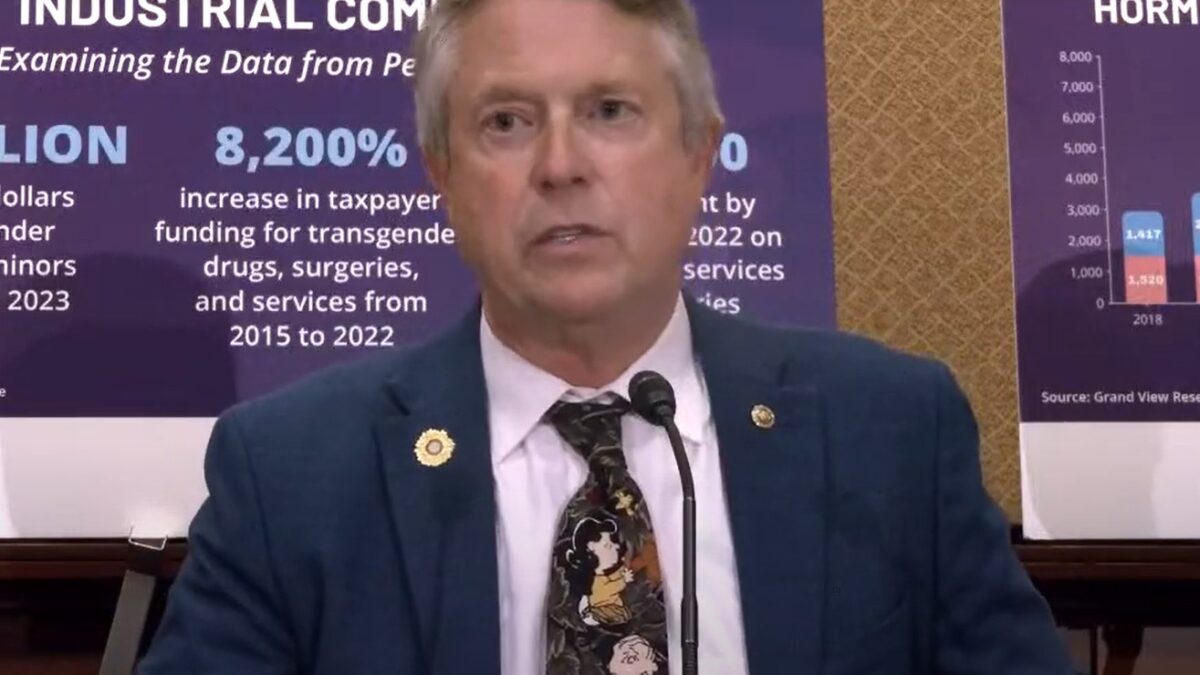
In 2016, as ISIS spread its mayhem into the heart of Western Europe, beheading a Catholic priest at the altar in France and murdering well more than 100 other innocents across the continent, the Obama administration directed the secretaries of the Army, Navy, and Air Force to “integrate climate change considerations” into their “policy, guidance, plans, and operations.” The order reflected the Obama administration’s worldview: “If you’re consumed by the Middle East, you can’t fix climate change,” foreign policy advisor Ben Rhodes lectured, reverting, apparently, to his earlier career as a fiction writer.
Fortunately, President Trump signed his own executive order last month rescinding the Obama order the Department of Defense directive was based on. Trump’s order gives federal agencies, including the DoD, 180 days to conduct internal reviews and submit reports recommending programs and regulations that should be eliminated.
The contents of the DoD’s report may be of particular interest to Defense Secretary James Mattis, who reportedly informed the Trump administration that the president’s proposed defense budget is insufficient to rebuild the military. If Mattis cannot persuade Trump to request additional funds, then perhaps he can convince him to reprioritize existing funding instead. Here are a few simple — and politically convenient — programs the SecDef might highlight.
The ‘Green Base’ Mandate
Title 10, section 2911 of U.S. Code requires DoD installations to obtain 25 percent of their power from renewable energy sources by 2025. Eliminating the mandate will require cooperation from Congress, but Trump should make it a priority to do so. In theory, authentic energy security on military bases in the event of a shortage of traditional fuels would be a good thing for national security. Sadly, this is not what the activists had in mind.
A government study found that only two out of 17 renewable energy programs surveyed were designed to provide power in the event of a traditional power shortage. The remaining programs burned large amounts of money for the sole purpose of avoiding fossil fuel consumption. From 2014 to 2015, defense spending on renewable energy construction increased by 60 percent.
These largely useless programs are not the only green energy boondoggles, unfortunately. It gets much sillier. To meet the mandate’s arbitrary renewable energy minimums, the DoD simply purchases Renewable Energy Certificates (RECs) from third parties. RECs allow their holder to meet renewable energy requirements without actually producing or consuming any of the energy itself.
According to the Heritage Foundation, “the DoD receives credit for meeting renewable energy standards by covering some of the production costs of private energy projects with defense dollars.” In return, the DoD obtains no energy and no discernible benefit at all other than compliance with arbitrary requirements. The Heritage report concluded that the mandate — and compliance efforts — diverted funds from the Pentagon’s wartime priorities. A DoD feasibility study the report cites described the use of those funds to comply with the mandate as “financially unappealing in all cases.”
The Net Zero Waste Program
The Net Zero Waste program was launched in 2010 with a goal of eliminating all solid waste deposits from selected military bases to local landfills by 2020. Thankfully, the program’s costs are only in the tens of millions — so far. But the disruptive impact of Net Zero and other programs like it encompass more than earmarks for alternative energy contractors. They waste man-hours and create distractions for leaders already trying to make do with less.
The policy’s impact is not confined to obscure regulations. Environmental Compliance Assessment Teams, originally created to ensure safe procedures for biohazards, conduct “random compliance checks” of local units’ compliance with environmental regulations. “Deficiencies” are reported to the base commander and require a written response from the unit commander, detailed compliance plans for the future, and a second time-consuming inspection. And Net Zero requirements are now part of the regulations they must enforce.
The inspection process makes sense if you’re inspecting biohazard storage to prevent dangerous contamination incidents. In practical terms, on Net Zero bases, these inspections mean that an environmental compliance officer can and will dig through your unit dumpster in the motor pool to search for improperly disposed plastic soda bottles.
At Fort Hood, I saw more than one unit conclude that the risk of bureaucratic headaches from failed inspections were too great and the whole process too distracting. It was simply more time-efficient to post a guard outside the dumpster during duty hours to inspect trash before it was thrown out than to risk the hassle of a failed inspection. In some cases, the unlucky soldier on trash-guard duty even had to fish bottles with tobacco spit out of the trash and rinse them (tobacco juice being non-recyclable) before transferring them to the recycle bin.
At a ribbon-cutting ceremony for a Net Zero Waste Center in Fort Polk, Louisiana, an environmental contractor for the program informed the audience, including the post commander Brig. Gen. William B. Hickman, that “every one of us — military, civilian, adult, and child needs to think of the mission, the environment and the consequences to the community. When we think in this way, it’s really easy to say ‘no’ to Styrofoam because it’s not just a single-use incident without long-term effects.”
Fort Polk is the home of the Joint Readiness Training Center (JRTC), the final training stop for deploying infantry brigades. Of the hundreds of thousands of men and women who have passed through JRTC, it is safe to say that precisely zero of them understood “the mission” to include saying no to Styrofoam.
The New Environmental Bureaucracy
Defense spending on “environmental compliance” increased by over $119 million this year alone, according to the 2017 Comptroller General’s report. Much of that increase is due to regulations enacted over the last eight years. The Obama administration created a “vast new defense climate change bureaucracy,” and the military is paying the price for it.
The Department of Defense announced in 2016 that, per executive guidance, it had “expanded the screening of DoD issuances (Directives, Instructions and Manuals) by an additional 87 in FY 2015, to identify those that should be updated to include the consideration of climate change.”
The website for the Department of the Navy for Energy, Environment and Climate Change — which began in 2009 with Task Force Climate Change — boasts that the Department of Defense will reduce its greenhouse emissions by 34 percent by 2020. (The site also helpfully links to a Vice News article headlined “The Pentagon Just Issued Marching Orders on Climate Change.”)
A quick look at the DoD’s 2016 Sustainability Performance Plan, however, reveals a key to their “success.” The report admits that the department’s actual greenhouse gas emissions rose by 2 percent in 2015, but its “net” emissions were reduced by 18 percent once “credits are included.” In other words, the DoD is spending defense funds — lots of them —on carbon credits to reduce its environmental appearance. Similar panels and programs abound. President Trump should order a review of all policy directives the previous administration “updated” to reflect its climate change policy.
In sum, the Obama “green military” approach and the programs that came with it should be scrapped, and the resulting savings should be redirected to readiness improvements that Secretary Mattis and his troops so desperately need.









